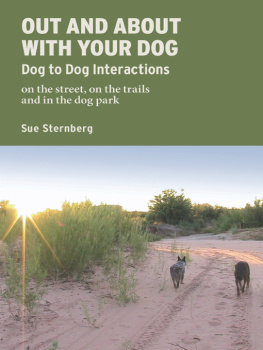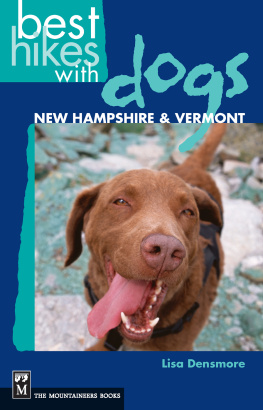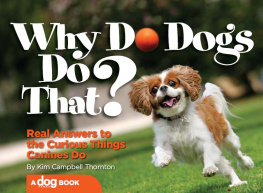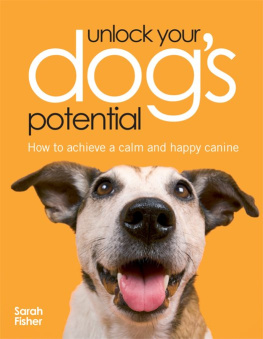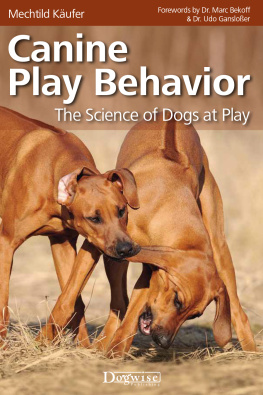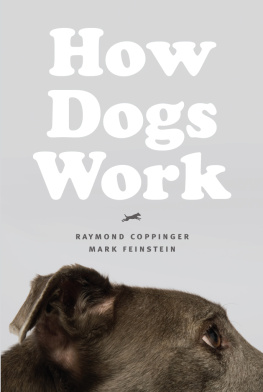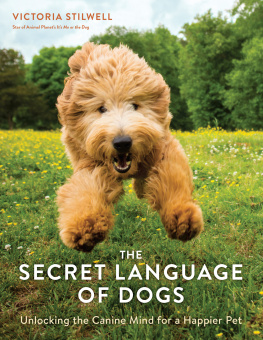Whether youre going to find out through this guide that perhaps your dog is one for whom the Dog Park is not appropriate, whether youre going to find out through this guide when to remove your appropriate dog from the Dog Park for his own protection, or whether youre going to find a great play group for your dog, I hope the words contained in this manual can help you keep your dog (and other dogs) safe, happy, and healthy.
Out and About With Your Dog
2009 Sue Sternberg
All rights reserved.
No part of this book, including interior
design, and illustrations, may be reproduced
or transmitted in any form, by any means
(electronic, photocopying, recording, or
otherwise) without the prior written
permission of the author.
Book design: Brian Peterson
Printed in the United States

Introduction
Many dogs are angels in their own homes, angels with humans, but behavioral nightmares when in the presence of other dogs. And even if your dog means no harm, the sight and sound of a dog lunging and growling at the end of his leash trying to get to another dog causes the public to panic, make wide berths or cross the streets to avoid your dogthe dog they believe to be horribly evil and aggressive. Some dogs can actually play well off leash with other dogs, but on leash, become snarling, lunging monsters. Owners of these alleged monsters are shunned, ostracized, looked down upon, and believed to be at fault and the reason for their dogs bad behaviors.
Does your dog lunge and strain and bark when youre out on a walk and another dog appears? Does it feel embarrassing to be out in public with your dog if any other dogs are around? Has your dog picked fights at the public Dog Park? Is your dog a heat-seeking missile that really does hate all other dogs?
Or does your dog seem to love other dogs so much that any other dog in his sight causes him to pull and strain and gag and claw his way towards it?

It can be just as frustrating to live with a dog who LOVES playing with other dogs, because he loves them so much that he feels the need to strain and pull towards any other dog he sees while out on a walk. Sometimes, a dog who adores other dogs so much that he is out of control around them is as difficult or embarrassing to live with as a dog who hates other dogs.
No matter what particular behavior your dog displays around other dogs, this book will offer training and management tips so that your dog can behave like a good canine citizen in the presence of other dogs.


ON-LEASH ENCOUNTERS
The absolute hardest, most problematic, most difficult way for dogs to greet and meet is on leash. And there are really only two potential outcomes for the greeting, and neither is particularly useful or desirable:
1. After the initial investigative sniffing and greeting ritual, the dogs play.
2. After the initial investigative sniffing and greeting ritual, the dogs fight.
Neither is actually better than the other. If the dogs sniff and then play, your dog has just gotten a jackpot sized reward for going up to a strange dog and introducing himself. The next time he sees a strange dog, he will want to pull towards that dog to greet it, to see if he can make a friend and have a little play session. Each subsequent time, your dog will strain harder and harder to get to the other dogs, hoping to get to stop and play. If nothing else, this will lead to a harder and harder time managing your dog on walks, since he now gets so distracted around other dogs. Also, if your dog mostly plays when he greets other dogs, but suddenly meets a dog that tries to fight him, your dog can quickly learn not to trust oncoming dogs, and not to trust himself in meeting and greeting other dogs. Sometimes this leads to a dog that preemptively lashes out at other, on-coming dogs, and a perfectly friendly dog transforms into a snarling, lunging monster. Youll also stop trusting owners who tell you that their dog is friendly when half the time their dog clearly is not.
If the dogs sniff and then squabble, or actually fight, then your dog could either start to fear other dogs when he sees them on the street, or worse, he will begin to pull towards them, wanting to pick a fight.
You basically get the same problematic dog either outcome. Whether fighting or playing, on-leash encounters usually produce a dog that pulls and strains and often lunges to get to other dogs. The motivation may be different (I want to play, I want to fight) but the symptom is the same: your dog becomes more and more of a nightmare to walk in public.
TEACH YOUR DOG TO IGNORE OTHER DOGS
Its best to avoid the possibilities all together, by teaching your dog to ignore other dogs completely when walking on leash, unless specifically stopped on command, told to sit and stay and wait for permission to approach and greet. Otherwise, your dog should learn that when hes on leash, he should walk past and ignore other dogs.
The best plan of action for on leash encounters is plain and simple: if your dog is on a leash, you should avoid contact with other dogs, leashed or unleashed. There is no need for your leashed dog to learn how to greet other dogs politely, successfully, or at all. As long as your dog can ignore other dogs, he does not need to be able to GO UP to another dog and greet and meet another dog politely or in a playful manner in order to be a good canine citizen.
GETTING PAST ANOTHER DOG ON THE SIDEWALK
Many dogs can stride out at the end of their leashes, sniff about, and walk casually and calmly as other dogs pass by. Many dogs cannot.
These different types of dogs are mostly born, not made, which youll believe if and when you get the type that cannot walk past another dog without lunging and barking. If you have the easy dog, one that can be ignored in the presence of other dogs and still behave, lucky you. Just wait.
For the rest of us with dogs that go deaf and escalate into horrifying beasts in the presence of other dogs, here are some training steps. Dogs who behave in beastly ways do not need more socialization with other dogs. They need to be taughtactively taughthow to ignore other dogs. They dont and wont do it naturally. They wont just get used to other dogs. In fact, practicing the lunging and barking over and over again will make the dog worse. Practice does make perfect. Be proactive and help your dog practice acceptable behavior, not aggressive displays.
? So how can you help your dog walk nonchalantly past another dog he encounters on the sidewalk?
YOUR DOG WILL NEED THREE NEW SKILLS:
The ability to look up at your face at your command, and continue staring at you (and nothing but you) until you give him permission to look away.
The ability to heel at your left side, matching your stride, his head tilted upwards and his eyes staring up at your face as you pass another dog.
The ability to heel at your right side, matching your stride, his head tilted upwards and his eyes staring up at your face as you pass another dog.
If the oncoming dog will end up passing you on your left side, then your dog will need to heel on your right side, so that you create a blockade between them. Conversely, if the oncoming dog will end up passing on your right side, your dog will need to heel on your left side.
Next page
